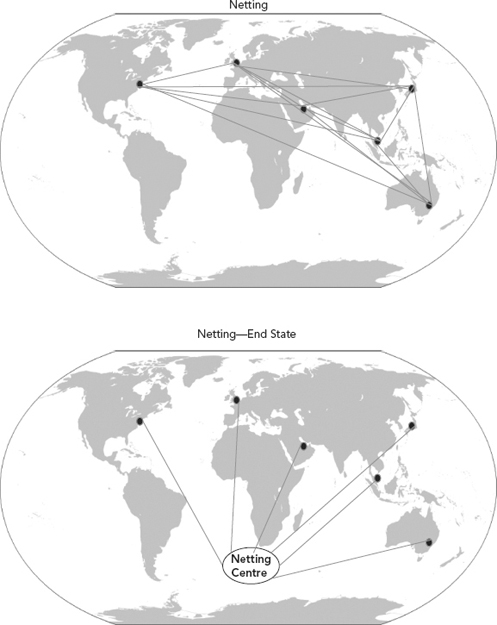Chapter Seven
Netting
NETTING HAS BECOME A WAY of life for many large corporations around the world. Conceptually, it appears to be a simple enough task for the planning and execution teams. However, most finance professionals who have been through a netting implementation would vouch for the discipline, process, and complete end-to-end understanding and coordination required to ensure that the project adds value to the smooth day-to-day operations of the organisation.
INTRODUCTION AND CONCEPTS
Netting of payments, commonly referred to as netting, is the periodic net settlement of specific outstanding payments between different entities or units. This is different from gross settlement, whereby each payment is made individually. Netting simply reduces the total set of payments to a smaller set of payments, where the net amounts are paid or received, thereby greatly lowering the transactional workload and foreign exchange conversions, potentially saving significant costs for the organisation.
Figure 7.1 shows a sample netting structure wherein payments from entities across the globe can be simplified into a single set of payments from a single location, the netting centre.
FIGURE 7.1 Sample Netting Structure

Types of Payments That Can Be Included in Netting
Different payments can be included in the netting process. These are:
- Trade (supplies, sales, logistics)
- Intercompany funding ...
Get The Handbook of Global Corporate Treasury now with the O’Reilly learning platform.
O’Reilly members experience books, live events, courses curated by job role, and more from O’Reilly and nearly 200 top publishers.

